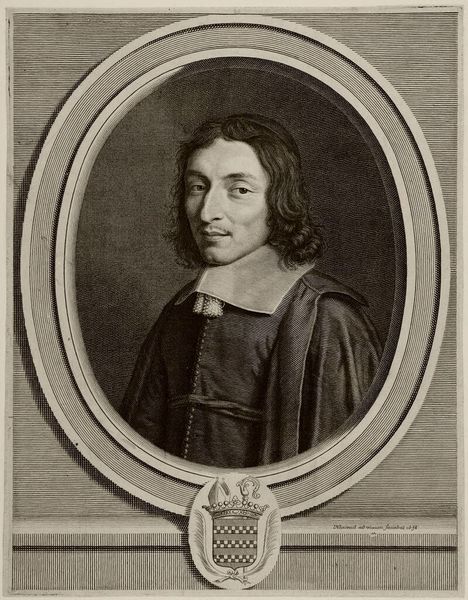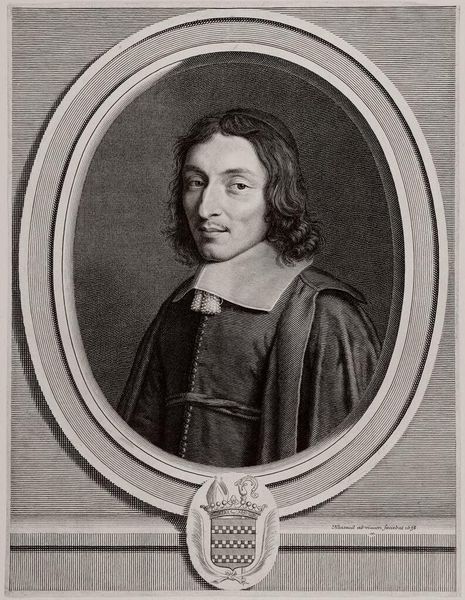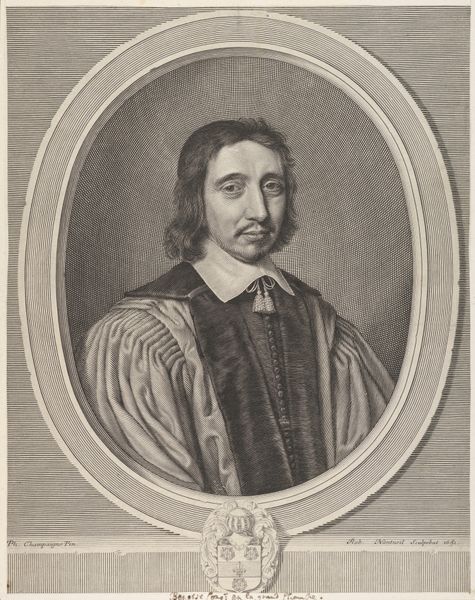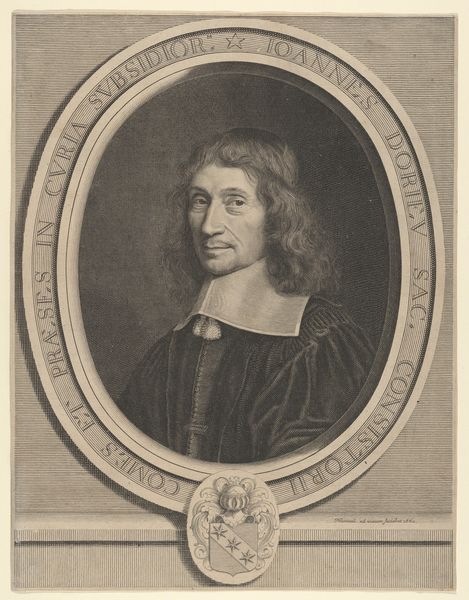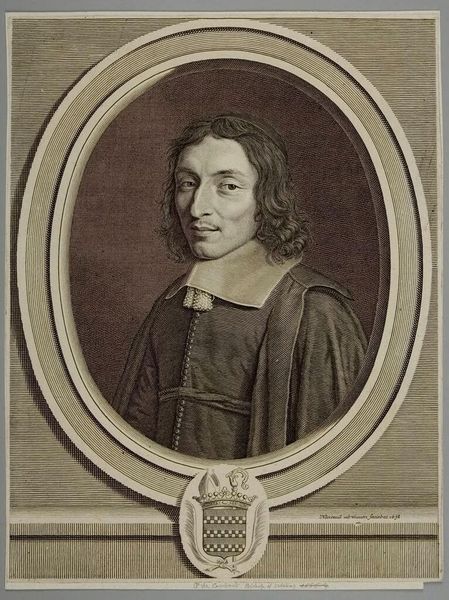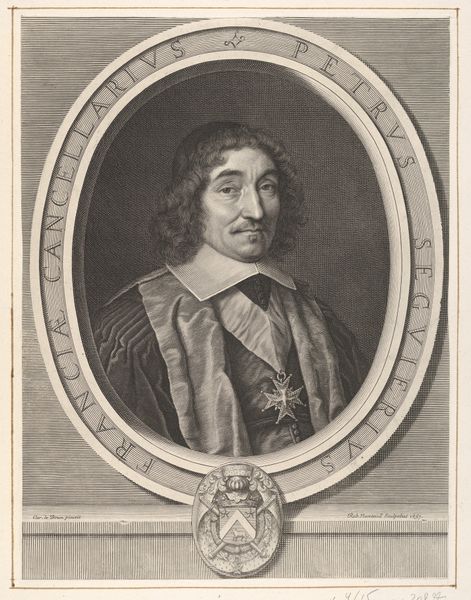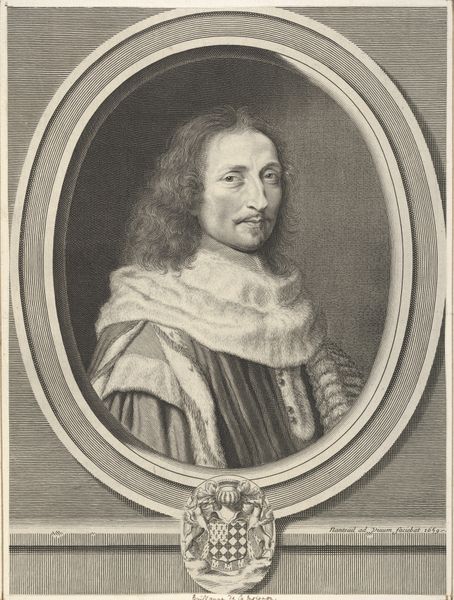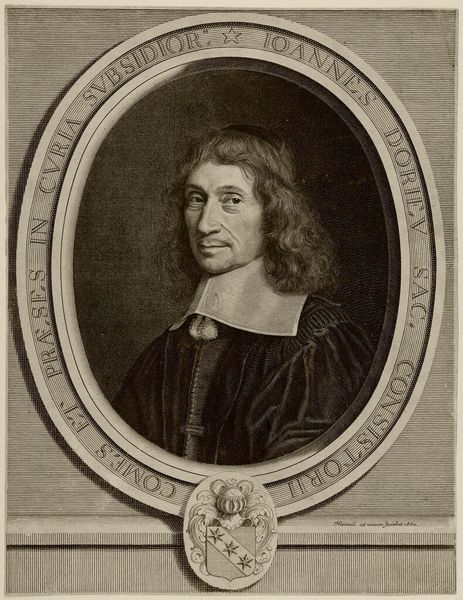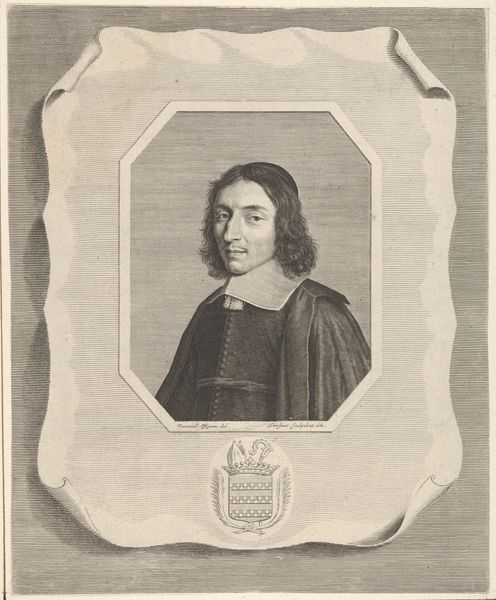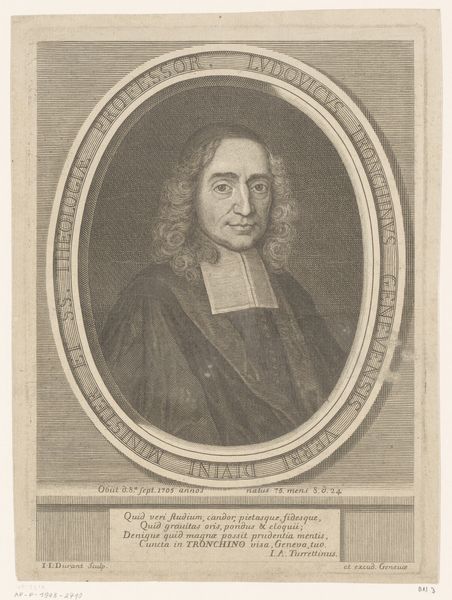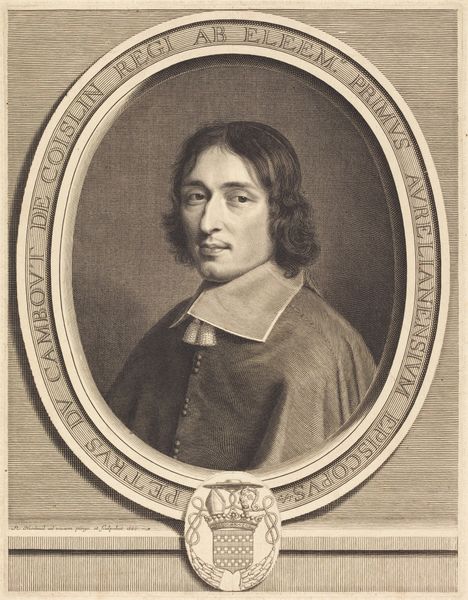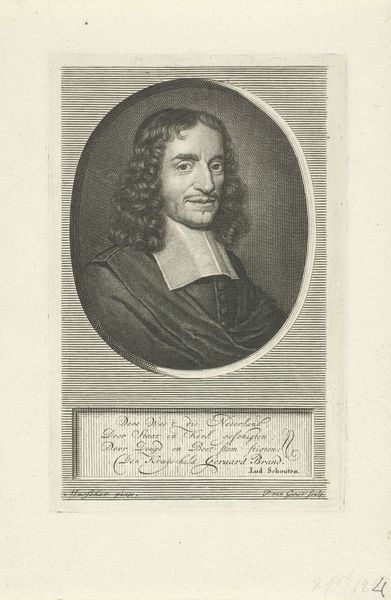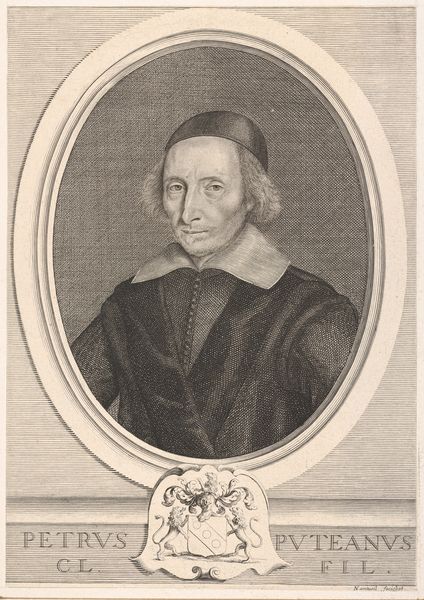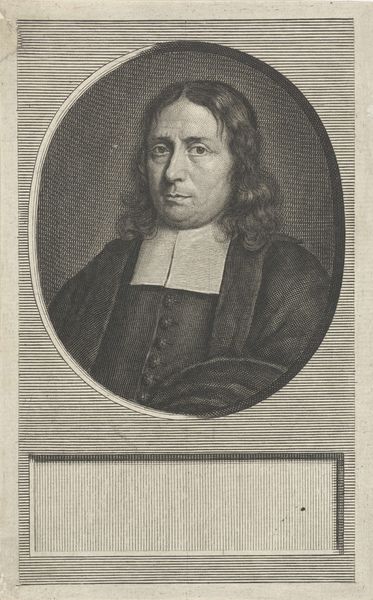
Le Cardinal de Coislin (Pierre-Arnaud du Cambout de Coislin) 1658
0:00
0:00
drawing, print, engraving
#
portrait
#
drawing
#
baroque
# print
#
engraving
Dimensions: Sheet: 13 7/16 × 10 7/16 in. (34.2 × 26.5 cm) Plate: 12 13/16 × 9 3/4 in. (32.6 × 24.8 cm)
Copyright: Public Domain
Editor: Looking at this print, what immediately strikes me is its incredible stillness; there's a quiet confidence in the Cardinal’s gaze. Curator: Indeed. This is Robert Nanteuil’s "Le Cardinal de Coislin (Pierre-Arnaud du Cambout de Coislin)," created in 1658. What's remarkable here is how Nanteuil employs the engraver's tools to achieve such delicate gradations and textures, building form with line alone. The oval border enhances the figure's containment and imbues the image with the kind of structured presentation we see repeated within the sitter's attire, framing the face. Editor: I'm especially drawn to that robe. Can we consider the production? The time spent creating it? Surely such adornment spoke of both immense wealth and control. The meticulous labor behind that fabric had as much meaning as the image we see here. I wonder about the workshops producing textiles like that then, the artisans, their lives... Curator: Precisely! Notice, also, the symmetry—the delicate balancing of light and dark. Nanteuil orchestrates tonal arrangements, creating contrast with strategic strokes to reveal structure. This attention given to order amplifies Coislin’s formidable aura, representative of both royal patronage and spiritual authority. It makes you consider portraiture conventions: how identity and representation meet through form. Editor: But consider that formality: portraiture in the 17th century also became a battleground of class display. Materials speak directly. It shows what you could own, and by implication, control. And how was Nanteuil positioned within that hierarchy, crafting images for powerful patrons? What were his working conditions? Curator: Certainly. These prints also served to reproduce power—extending a Cardinal’s likeness and therefore his influence far beyond a physical space. I note a clear tension emerges between image and objecthood when such labor is displayed, or further reproduced for mass distribution. Editor: A tension indeed! Seeing Coislin rendered as a print helps focus my attention not just on line and form, but on that transfer of power dynamics and all the labor involved in producing the material. Curator: I agree! Delving deeper into form provides insights into representation and the very language of image making; simultaneously acknowledging that materiality offers a broader reflection on context and conditions during Nanteuil's time.
Comments
No comments
Be the first to comment and join the conversation on the ultimate creative platform.
